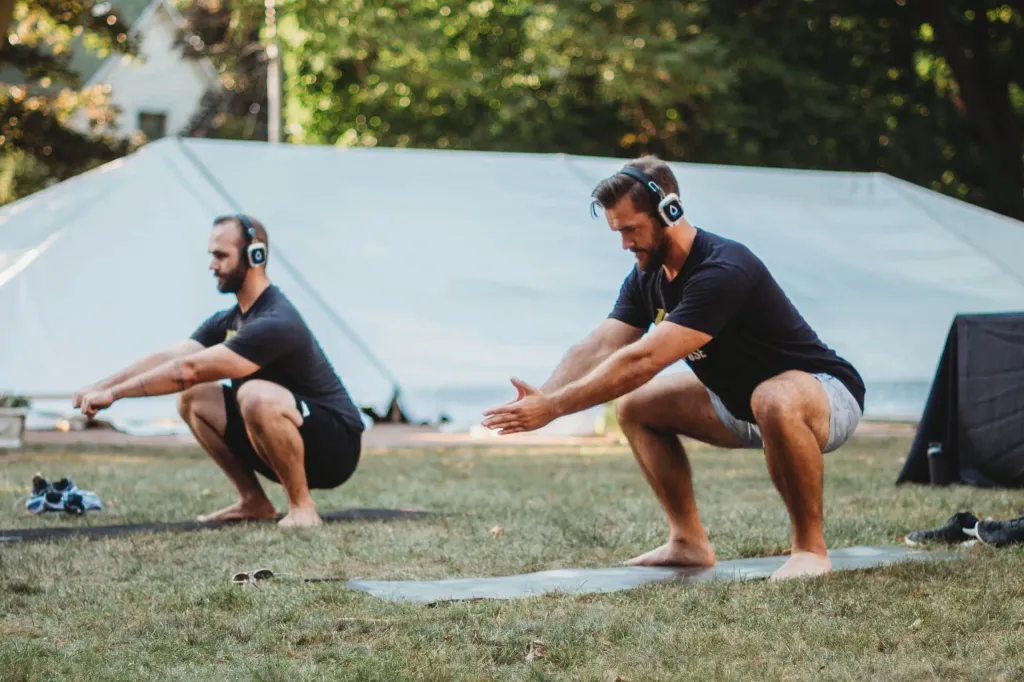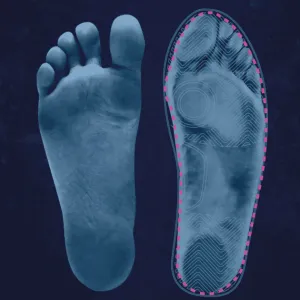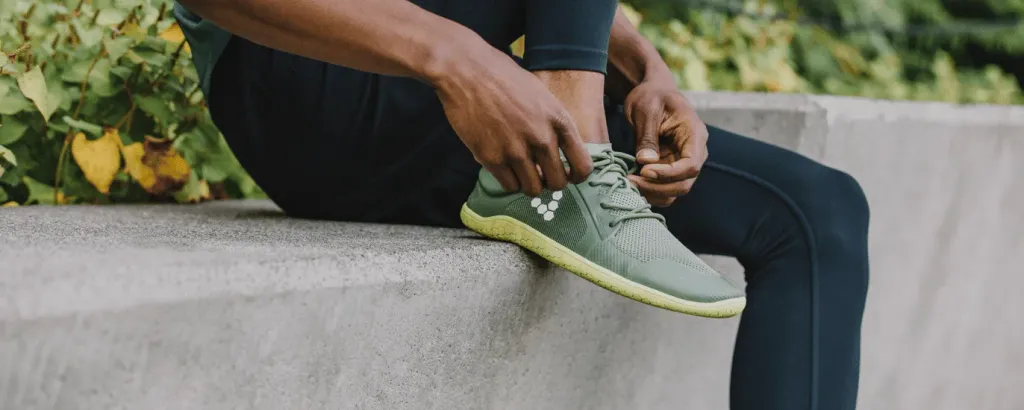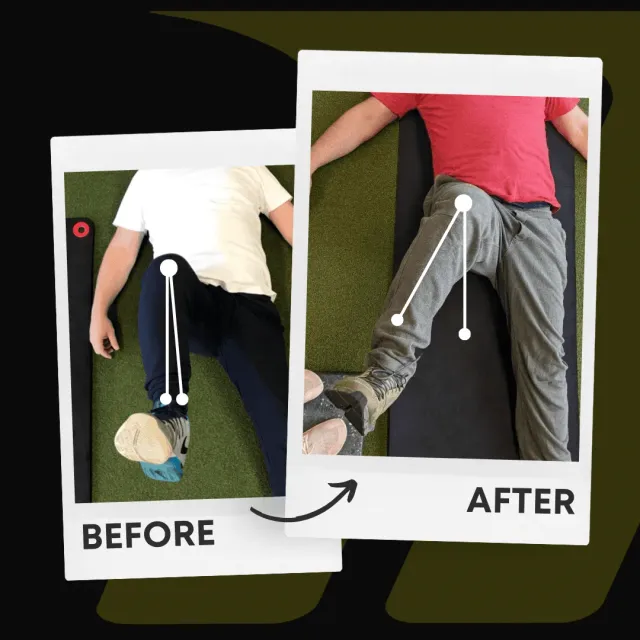Why Barefoot Training Is The Way
January 13, 2022 | Healthy Living

Feet: The Taboo Body Part
I went to a podiatrist (foot doctor) for ankle pain at around ten years old. I remember walking in a bit nervous because no one had ever touched my feet before, and I barely touched them myself aside from putting on socks and shoes.
My doctor instructed me to remove my shoes and socks and lie flat on the table barefoot. Then, he performed a series of tests to determine whether my ankle was healthy. After that, it was smooth sailing, and my feet were fine.
That’s a lie. What actually happened was my doctor grabbed my foot, and then I almost kicked his head into outer space. I’m ticklish; what can I say? My ankles and feet were also jacked up from not caring for myself.
We don’t talk about feet unless there’s a problem, and even then, most people have no idea what their feet do (or what they can do).
Let’s take a moment to reflect. When was the last time you consciously trained your feet? Or engaged in barefoot exercise? These questions are not just rhetorical; they are an invitation to consider the state of your foot health.
Demystifying Your Feet
Stand up. Look down. Those are your feet.
Believe it or not, the human foot is a marvel of complexity. It houses 28 bones, 33 different joints, and a plethora of connective tissue. Each foot is home to over 7,000 nerve endings, which partly explains my reflex to kick my podiatrist. But there’s more to it, and we’ll delve into that later.
Your feet serve many purposes:
-
Supporting your body weight.
-
Providing balance.
-
Shock absorption.
-
Transferring ground reaction forces (i.e., force distributed to the body from the ground).
-
Proprioception (i.e., sensory information to help you accommodate to your environment). (1)
The barefoot movement emphasizes the natural capabilities of the feet and how barefoot footwear can enhance strength, flexibility, and balance.
In essence, your feet are the unsung heroes that allow you to do almost everything in your daily life. However, to simplify things, we will talk about the foot in two contexts: the ankle and the toes.
Say I Again. Ankle. See, It’s Fun!
The ankle contains three joints (I told you it was complex), but we won’t delineate them. So, for now, all you need to know is that your ankle can perform the following movements:
-
Dorsiflexion – bringing the foot closer to the shin.
-
Plantarflexion – gas pedaling the foot.
-
Eversion – rolling the ankle outward.
-
Inversion – rolling the ankle inward.
We illustrate all of the ankle functions in our video on ankle CARs below.
A healthy ankle means you can adequately perform all these functions and load them appropriately. For instance, having good control and tissue quality in ankle inversion might help mitigate ankle sprains when you accidentally roll it. (2)
This Little Piggy… And The Big Toe.
The toes might be the most neglected body part in our profession, yet your toes are imperative to your existence. Your big toe (hallux) and lesser toes (2nd to 5th digits) are proprioceptive powerhouses, crucial for maintaining balance and allowing you to sense your environment better.
Your toes help you run and maintain balance and can be used in place of one’s hand/fingers in cases where one’s hands may not be a suitable option (e.g., amputations). Believe it or not, your toes have similar dexterity to your hands; it’s just that you never consciously use your toes, so this seems like an impossibility. Plus, wearing regular shoes and not barefoot shoes generally inhibits toe function.
To have healthy toes and a healthy foot, you should be able to flex and extend your big toe independently from your other toes. Conversely, you should be able to flex and extend your 2nd through 5th digits together without relying on the big toe.
Andres does a great job of showing how the toes work below.
Because your toes receive so much information from your environment, they must be functioning and not just immobilized blocks attached to the end of your foot.
The Chicken Or The Egg?
Unfortunately, we see many people with unhealthy feet, and I’m not shaming them. I used to be the same way. In fact, my ankles still leave a lot to be desired, but I digress.
Do people have poor-functioning feet because no one taught them how to use their feet or because shoes inherently inhibit the need to keep your feet healthy? I think it’s both. But if you’re unsure what to do about your toes and ankles, see us; we can help you decide the best path toward healthier feet and ankles.

I love shoes like the next person, but it’s important to understand that modern shoes were not designed to keep your feet healthy.
Shoes ultimately serve one purpose: protection from your environment (e.g., cold weather, rain, abrasive/sharp objects). So, once shoe manufacturers covered those bases, normal shoes became objects of appearance rather than function.
Furthermore, the modern design of most shoes alleviates the need for your feet to do work, which is mind-bogglingly contradictory to everything else we do. Think of it this way. You go to the gym and exercise to keep your joints healthy and mobile; you don’t wrap your entire body in a protective bubble and prevent it from moving around to keep it healthy.
Well, you do if it’s your foot. Shoes can alter body mechanics, leading to weaker feet and unnatural weight distribution. So, your option is to eventually switch to a shoe that lets your feet do feet things.
The Benefits Of A Barefoot Training Shoe
Barefoot shoes inherently have a wide toe box, are zero drop (i.e., the bottom of the shoe is flat because there is no angle change from the heel to the toe), and are thin enough to give you the sensory feedback you need to have thriving feet.
Generally, we recommend avoiding traditional running shoes with high arch support and thick soles, as these can immobilize your feet and prioritize short-term comfort over long-term health and performance. However, choosing a more padded shoe might be wise if you run on concrete. Humans historically ran in the dirt, mud, grass, and natural elements, not on concrete for miles on end. Times have changed, so make sure you find barefoot shoes or similar shoes that do the job needed for your environment.
Enter Vivobarefoot: Motive Training’s Barefoot Training Shoe
Ultimately, we know that traditional shoes can:
-
Prevent Your Toes From Spreading And Moving. The picture above illustrates this perfectly. Under no circumstances is binding the toes a good thing. Just imagine if you did that to your hands. Do you think your fingers would articulate well?
-
Stiffen The Ankle. Some shoes can compromise the length-tension relationship in the Achilles by putting it in a prolonged shortened position (think of a shoe with a heel lift). And some shoes will force more support through the ankle, inhibiting natural eversion/inversion from occurring (high-top shoes and boots are excellent examples of this).
-
Blunt Proprioception. Remember when I said my foot was sensitive? Maybe it was overly sensitive because I never let my foot do or touch anything. We want feet to adapt to our surroundings, so exposing the foot to different stimuli is crucial to its health.
-
Change The Structural Integrity Of The Foot. Smooshing and compressing the foot will inevitably change the structure of your foot. Bunion development is directly linked to shoes for this reason. (3)
Our gym exclusively uses barefoot shoes to exercise and train clients, so we partnered with Vivobarefoot to promote their unique products. Vivobarefoot is one of the first shoe companies to address the shoe/foot problem, and they detail their scientific position here. It’s worth the read, so definitely check it out.
If you want to switch to shoes that do justice to your feet and body, use MOTIVE at checkout and get 20% off your order anytime. Our favorite shoe is the Primus Lite, an athletic shoe that can be used for almost all activities. I would start there unless you’re a long-distance runner; if that’s the case, you might need something with a bit more cushion from an alternative company like New Balance or Xero Shoes. You still want more sensory input and sensory awareness while you run, but less padding will increase impact forces, which might beat your feet up too much.
Barefoot running is no joke. It takes time, patience, and practice. If barefoot running is your goal, start slow, light, and easy, and work up your foot and ankle strength to be able to run for longer distances.
Integrating Barefoot Training Into Your Workouts
Improved Foot And Ankle Strength
When you train barefoot, your feet and ankles are put to work in ways that traditional shoes don’t allow. Think about it: when you wear shoes, especially those with high arch support and thick soles, your feet get lazy. They don’t have to work as hard to maintain balance and stability because the shoes are doing most of the work. But when you train barefoot, your feet and ankles have to engage all those little muscles to keep you steady. This improves foot and ankle strength and helps reduce the risk of injuries like sprains and strains.
Plus, stronger feet and ankles can boost your overall athletic performance and may help alleviate knee pain, as well as hip and lower back pain. So, if you want to build resilient feet and improve your foot and ankle strength, it’s time to kick off those shoes and start training barefoot.
You can see how we integrate some barefoot training here:
If you can improve foot function and foot strength, you’ll have healthier joints, a stable base, and movement efficiency that you never thought possible.
Improved Balance And Stability
Training barefoot isn’t just about building strength; it’s also about enhancing your balance and stability. When you’re barefoot, your feet must work harder to keep you upright, engaging all those intrinsic muscles often neglected when you wear shoes. This can lead to better balance and stability, which means fewer falls and sprains. Strong feet mean a strong foundation, which you should be able to get behind.
Improved balance and stability can also enhance your athletic performance and help prevent common injuries, including knee, hip, or lower back pain. So, if you want to improve your overall stability and reduce the risk of injuries, try barefoot training. Your feet will thank you.
Barefoot Training Is The Way

It’s simple: treat your foot like you would anything else. Give it room to move, and move it often. Do your ankle and toe CARs every day. Don’t bind or restrict your foot unless that’s required of you (e.g., sports). Start slow if you run outside on concrete often, and consider an alternative to Vivobarefoot with slightly more cushion but just as many benefits.
Buy barefoot shoes, begin barefoot training (or training barefoot completely), and watch how your body and feet transform. If you do that, you’ll put your feet in a much better position to be healthy, which is precisely why we prefer to use our feet the barefoot way.
And you should, too.
References:
Written by
Brian Murray, FRA, FRSC
Founder of Motive Training
We’ll teach you how to move with purpose so you can lead a healthy, strong, and pain-free life. Our headquarters are in Austin, TX, but you can work with us online by signing up for KINSTRETCH Online or digging deep into one of our Motive Mobility Blueprints.




